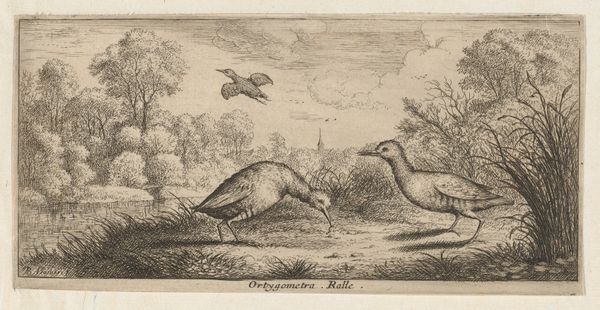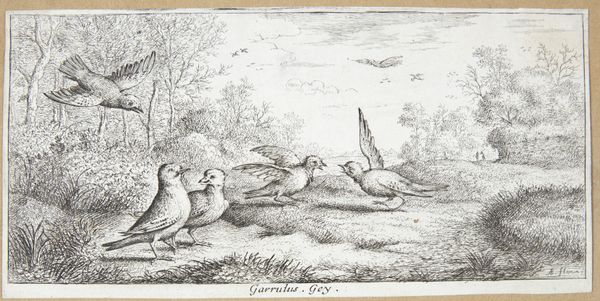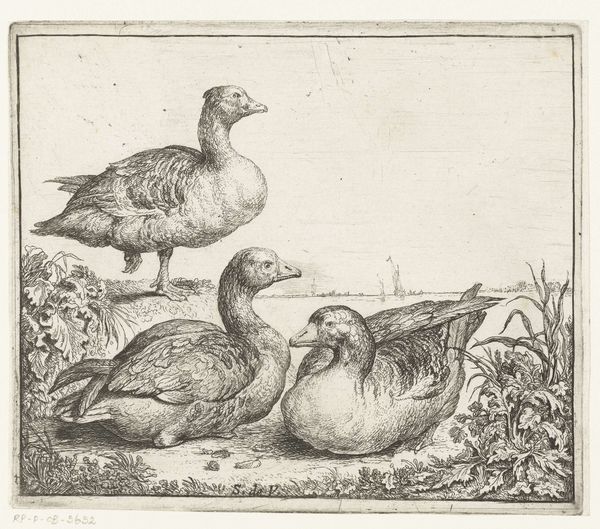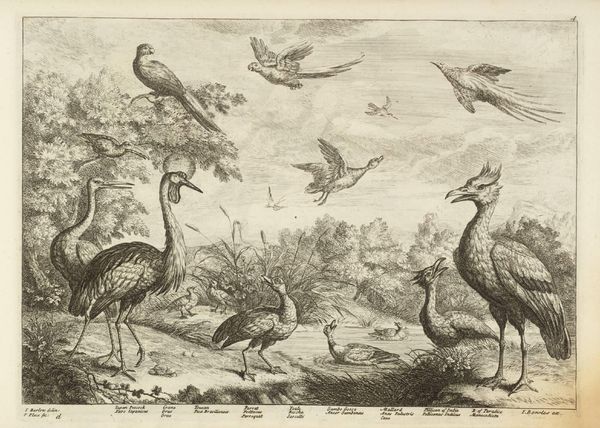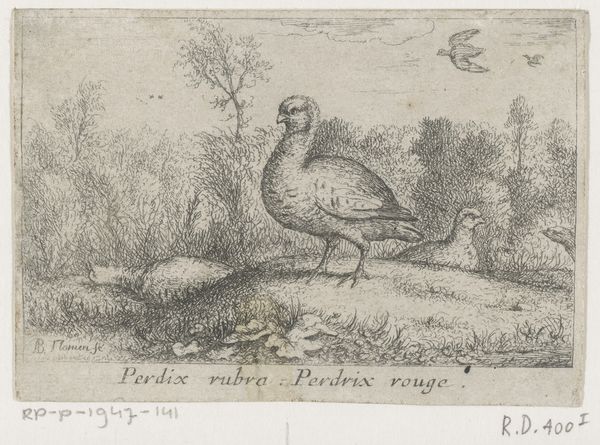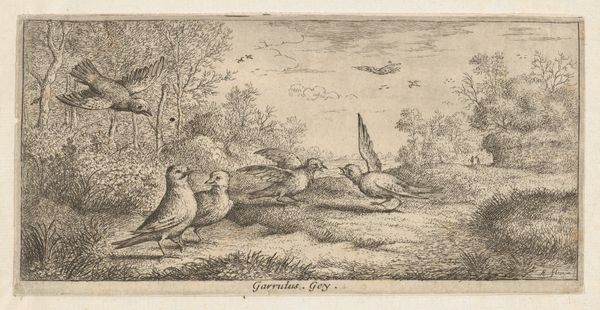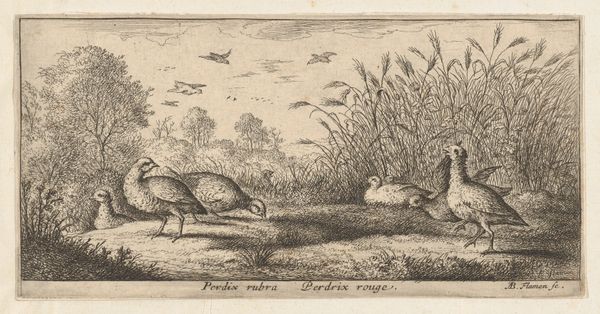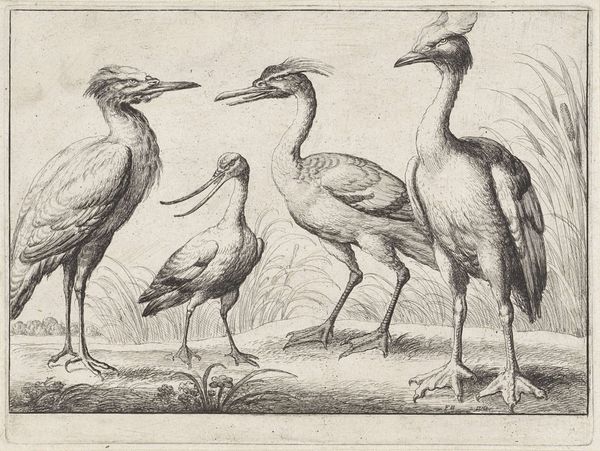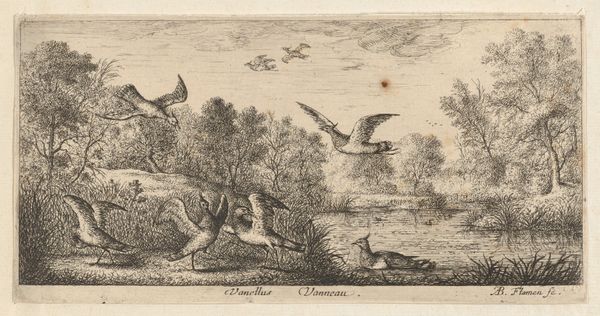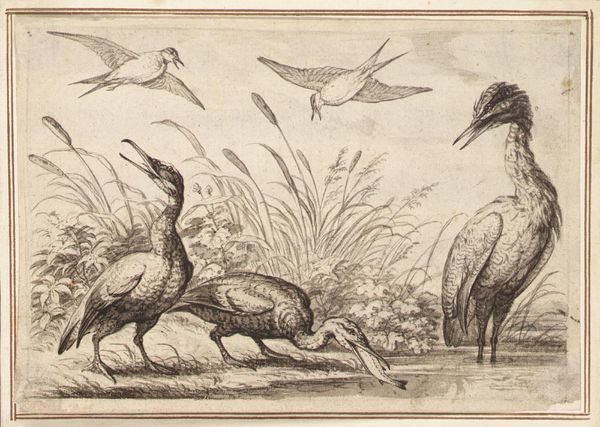
drawing, print, etching
#
drawing
#
baroque
# print
#
etching
#
landscape
#
figuration
#
realism
Dimensions: 95 mm (height) x 200 mm (width) (bladmaal)
Curator: I'm drawn to the sheer simplicity of this print; it's all delicate lines and muted tones. Is it just me, or does this evoke a feeling of quiet observation, almost like peeking into a secret world? Editor: Indeed. What we're looking at here is Albert Flamen's "Vandhønen (Ortygometra)," likely created sometime between 1620 and 1669. It's an etching, which is a type of print, and what captivates me is how such a seemingly straightforward image reflects complex colonial and environmental histories. Curator: Colonial histories, really? I mean, it's birds... I thought this would just be Baroque landscape art. Editor: Absolutely. Landscape art, even those portraying birds, doesn't exist in a vacuum. Think about who had the leisure to observe and depict nature. What does it mean to classify, name, and represent a species—particularly through a European lens? We see here this impulse to categorize the world in terms of centers and margins, and those activities are embedded in this etching. The "natural" world gets packaged up neatly through artistic practices and gets circulated amongst elite audiences. Curator: I can appreciate that. Looking closer, it is about classification—almost cold, despite the organic subject matter. The detail on the birds, the way they're presented so meticulously... there's a taxonomic air about it. Although, there is something so satisfying in that kind of precision; a desire to order and define things—very human. How did the artist make something so delicate but also somewhat cold? Editor: Precisely. The etching technique lends itself to fine lines, which heightens the sense of realism. At the same time, think about what the birds, especially, symbolized in different cultures. This species migrates and connects lands through those patterns. And with migrations you get discussions about borders, territory, displacement... These creatures become very charged and relevant figures when considering questions about land and belonging. Curator: I love that perspective; it makes me think of these little birds carrying unspoken histories with them, across oceans. So much weight packed into those little avian frames! Looking again at the details, I admire how, with such minimal tools, Albert Flamen achieves the look of a full ecosystem. The details surrounding the wildlife show us the artist did observe a good deal. Editor: The interplay between art, science, and social context is often much more profound than we initially recognize, isn’t it? Vandhønen really gives a new insight on our perspective about ecology.
Comments
No comments
Be the first to comment and join the conversation on the ultimate creative platform.
